Great Basin National Park Camping Guide
Great Basin National Park offers an uncrowded camping experience near Great Basin beneath some of the darkest night skies in America. Five developed campgrounds spread across elevations from 7,000 to 10,000 feet provide options ranging from creekside woodlands to high alpine forests. Unlike more crowded parks, Great Basin's remote location means you'll often find solitude and silence at your campsite. All park campgrounds now utilize reservations during peak season, with a short 30-day booking window (shifting to 7 days in late fall) on Recreation.gov. One campground (Lower Lehman Creek) remains open year-round, while others operate roughly May through October depending on snow. There are no entrance fees to the park, and sites cost about $20 per night (except the free primitive sites along Snake Creek). Nights are chilly even in midsummer - at 10,000 feet, expect lows in the 30s°F - so pack accordingly. This guide covers everything you need to know to plan and enjoy camping in Great Basin National Park, with tips from seasoned campers and The Dyrt community.
Great Basin National Park Camping at a Glance
With its high elevation and remote Nevada desert setting, Great Basin camping requires some extra preparation. Summers bring mild days (70-85°F) and cool nights (40-55°F) at lower elevations, while the alpine campground at Wheeler Peak (near 10,000 ft) stays around 60-70°F by day with nights often in the 30s. Most campgrounds are reservation-only during the summer - the park introduced a reservation system in 2025 that allows booking starting 30 days in advance (and 7 days ahead after September 15). Campers consistently praise the exceptional stargazing and peaceful atmosphere, noting that even on busy weekends the campgrounds feel far less crowded than those in more famous parks. However, the lack of nearby services means arrive fully supplied - the nearest gas and groceries are 60 miles away in Ely, and water is not available at most campgrounds (fill up at the visitor center). Summer thunderstorms are common in July and August, and fire restrictions may be in effect during dry spells. Still, Great Basin's dark skies, ancient bristlecone pines, and quiet trails make the planning well worth it for campers seeking a true wilderness camping experience in Nevada.
Great Basin National Park Campground Quick Facts
| Quick Facts | Details |
|---|---|
| Number of Campgrounds | 5 developed campgrounds (plus one primitive camping area along Snake Creek) |
| Total Campsites | Approximately 126 sites in total Baker Creek: 38 sites; Wheeler Peak: 37 sites; Upper Lehman Creek: 24 sites; Grey Cliffs: 16 sites; Lower Lehman Creek: 11 sites |
| Campsite Costs | $20 per night for standard sites (half-price with Senior Pass) Group sites at Grey Cliffs $30 per night Snake Creek primitive sites are free |
| Reservation Platforms | Recreation.gov (rolling 30-day advance window for peak season; 7-day window after Sep 15) First-come, first-served only in off-season and at free primitive sites |
| Camping Seasons | Lower Lehman Creek open year-round (winter accessible) Other campgrounds open roughly May - Oct (weather dependent; Wheeler Peak opens last in summer) |
| Temperature Ranges | Lower elevations (7,000-8,000 ft): Summer 75-85°F days, 45-55°F nights High elevations (~10,000 ft): Summer 60-70°F days, 30-40°F nights; even colder in spring/fall |
| 2025 Updates | All park campgrounds now require reservations in peak season via Recreation.gov Short booking window (30 days out) implemented to manage demand No park entry fee; Lehman Caves tours require separate reservation |
Great Basin Campgrounds: Complete Guide
Lehman Creek Campgrounds (Lower and Upper)
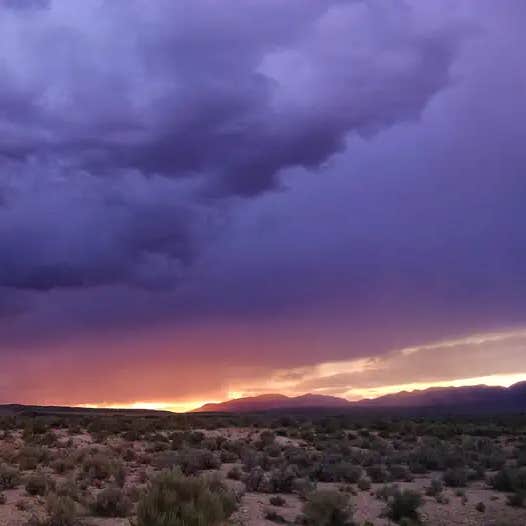
Lower Lehman Campground — Great Basin National Park
Lower Lehman Creek Campground sits at 7,300 feet near the base of Wheeler Peak, along a creek shaded by white firs and aspens. It has 11 sites that accommodate tents or RVs (some pull-throughs for small RVs). This is the only campground open year-round, though winter access can be snowy. All sites include picnic tables and fire rings, and vault toilets are provided. No potable water is available on-site (fill up at the visitor center). Campers love the soothing sound of Lehman Creek and the relative seclusion - sites are well spaced amid the trees. Stargazing is excellent from the campground, and the trailhead for Lehman Creek Trail is nearby. Lower Lehman is reservable in summer but often has open sites on weekdays, offering a quiet, cozy basecamp close to the Lehman Caves and park visitor center.
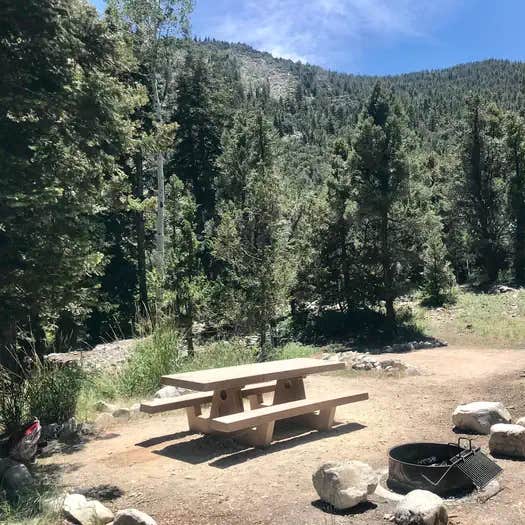
Upper Lehman Creek Campground — Great Basin National Park
Upper Lehman Creek Campground lies three miles further up the mountain road at 7,750 feet, offering 24 campsites nestled in a fragrant forest of pinyon pine, juniper, and mountain mahogany. The sites are spread along Lehman Creek and tend to be a bit more spacious than Lower Lehman's, with many tucked amid trees for privacy. Tents and smaller RVs (up to ~24 ft) are accommodated (larger rigs may have difficulty on the access road). Amenities are basic: picnic tables, fire rings, and vault toilets - like other park campgrounds, no drinking water is available at the campground. Campers appreciate the cooler temperatures here in summer and often mention waking to mule deer or wild turkeys wandering near camp. Upper Lehman is within a 10-minute drive of Lehman Caves (down the hill) and only a few miles below the Wheeler Peak scenic drive's upper trailheads. The campground is first-come in shoulder seasons and reservable during summer, when its tranquil creekside setting makes it popular (it typically opens by May, weather permitting).
Baker Creek Area Campgrounds (Baker Creek & Grey Cliffs)
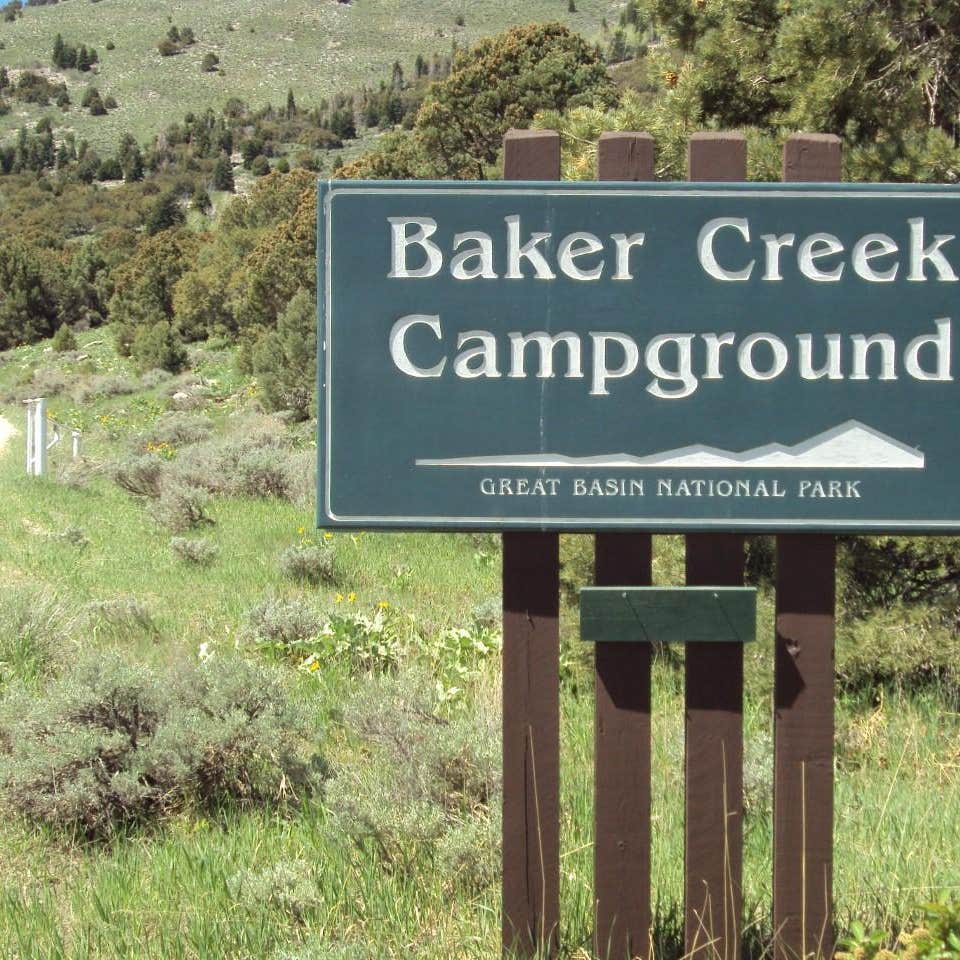
Baker Creek Campground — Great Basin National Park
Baker Creek Campground offers 37 first-come, first-served sites along a gravel road about 3 miles from the park entrance (near the town of Baker, NV) at 7,500 feet elevation. Sites are arranged in two loops beside Baker Creek, with ample shade from cottonwoods and pines. This developed campground has vault toilets, picnic tables, and fire rings at each site. No hook-ups or potable water are provided (water is available at the visitor center 5 minutes away). Baker Creek's sites are known for being relatively spacious and well-spaced, providing a sense of privacy. Fall brings beautiful foliage along the creek, and campers report wonderfully clear night skies. The road in is graded gravel - accessible to most vehicles, though it can get dusty. Baker Creek Campground is open spring through fall (roughly May to October) and tends to fill on summer weekends. It's a great choice for those wanting a quieter spot that's still close to the Lehman Caves and park headquarters. The trailheads for Baker Lake and Johnson Lake (remote alpine lakes) are a short drive up the same road, making this campground a convenient base for hikes.

Grey Cliffs Campground — Great Basin National Park
Grey Cliffs Campground is a tent-only campground hidden down a side spur off Baker Creek Road. It features 16 sites amid junipers and limestone rock formations, at roughly 7,200 feet elevation. Four of the sites are designated for groups, and all are tents only - RVs and trailers are not permitted due to tight access. Each site has a picnic table, fire ring, and tent pad. Vault toilets are provided, but there is no water or trash service, so campers must pack out what they pack in. What Grey Cliffs lacks in amenities it makes up for in solitude and scenery: sheer gray limestone cliffs backdrop the area, and it's only 1.5 miles from Lehman Caves. Campers often note how quiet and dark this campground is at night - perfect for astronomy enthusiasts. Because it's off the main road, Grey Cliffs is less visited; even in mid-summer you might find several sites open. It operates on a first-come basis (though sometimes appears on Recreation.gov for peak season). If you're prepared to dry camp, Grey Cliffs offers a peaceful, rustic experience with easy access to both the caves and Baker Creek trailheads nearby.
Wheeler Peak Campground (High Elevation Alpine Camping)
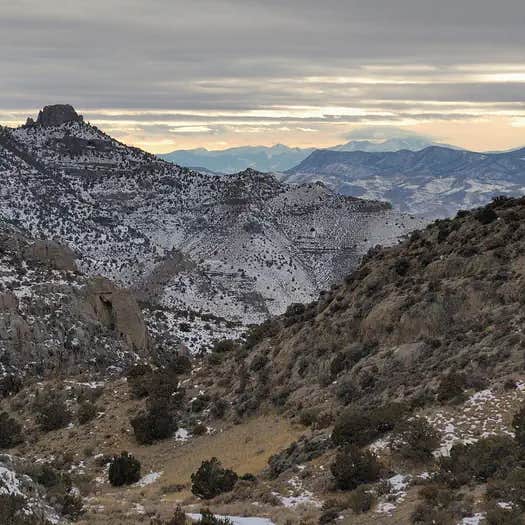
Wheeler Peak Campground — Great Basin National Park
Wheeler Peak Campground sits at nearly 9,900 feet, at the end of the scenic Wheeler Peak Drive - making it one of the highest elevation campgrounds in the region. Its 37 sites are surrounded by Engelmann spruce, white fir, and aspens, with towering Wheeler Peak (13,063 ft) visible through the treetops. This campground offers a truly alpine setting: summer wildflowers, crisp air, and even patches of snow lingering in early summer. Sites are equipped with picnic tables and fire rings; vault toilets are available. There is no potable water or electricity at Wheeler, and RVs/trailers over 24 feet are not allowed on the road or in the campground (the steep, winding drive is unsuitable for large rigs). Campers love the tranquility up here - many reports call it the quietest campground ever. With limited light pollution, the stargazing is phenomenal (bundle up, as nighttime lows can drop into the 30s°F even in July). Popular trailheads for the Bristlecone Pine Trail, Alpine Lakes Loop, and Wheeler Peak Summit are a short walk or drive from camp, making this an ideal base for hikers. Wheeler Peak Campground is generally open from late June through September (snow dictates timing) and is reservation-required in summer. Expect cool days (upper 60s°F) and very cold nights; come prepared for mountain weather. The rewards are solitude, breathtaking sunsets and sunrises, and immediate access to Great Basin's signature high-country hikes.
Primitive Camping: Snake Creek Road

Snake Creek Campground - Primitive
Snake Creek Campground (Primitive) isn't a single developed campground but rather a series of free, primitive campsites along the Snake Creek road on the park's remote south side. About 9 miles down a gravel road (high clearance recommended), you'll find several marked pull-in campsites (such as Squirrel Springs, North Fork, and others) at roughly 7,800 feet elevation. In total, around 12 primitive sites are spread out along the creek beneath pinyon and juniper woods. These sites have very limited amenities - generally just a fire ring and perhaps a picnic table at some, with no water or restrooms (a pit toilet is available near one of the sites). Camping here is free and first-come, first-served year-round. Campers choosing Snake Creek love the isolation and natural setting; it's far from any crowds and offers a good chance for wildlife spotting (deer, elk, and wild turkeys frequent the area). Roads can be rough or impassable in winter or after heavy rain, so check conditions. This area is great for self-sufficient tent campers looking to truly get away - just practice Leave No Trace, as there are no trash services. Snake Creek sites are about a 30-minute drive from the main park visitor center but close to trails like the historic Osceola Ditch trail. If you value solitude and don't mind the lack of facilities, primitive camping along Snake Creek can be a highlight of your Great Basin adventure.
Campgrounds Near Great Basin National Park
While camping inside the park is the big draw, there are a few convenient campgrounds near Baker, Nevada just outside Great Basin National Park that campers recommend. These nearby options can offer additional facilities (like hookups or showers) or serve as overflow when the park campgrounds are full.
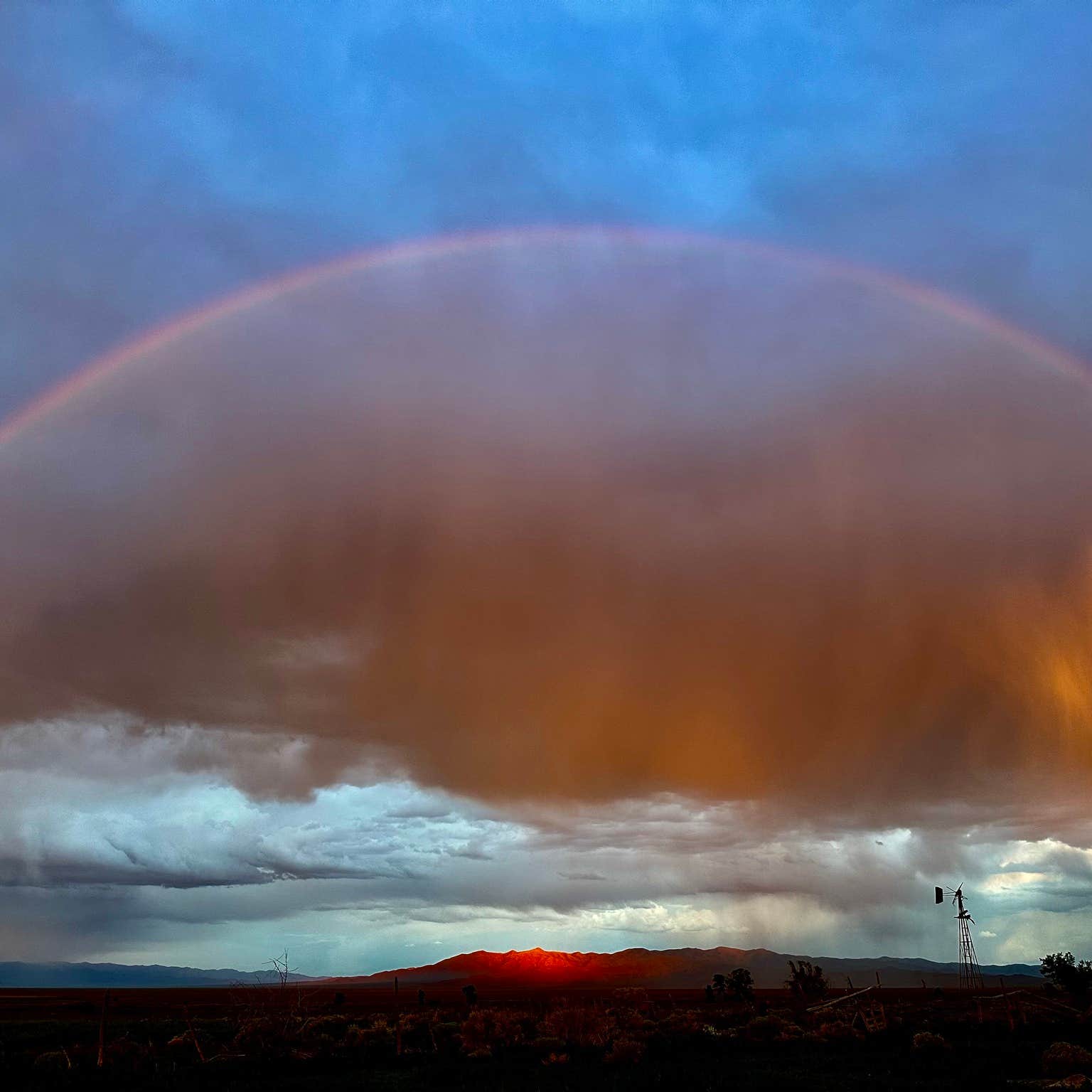
Whispering Elms Motel, Campground, & RV Park
Whispering Elms Motel & RV Park - Located in the tiny town of Baker just 5 minutes outside the park entrance, Whispering Elms provides 25 full-hookup RV sites, several tent sites, and a few simple cabins. This private campground is known for its extremely convenient location (essentially across the road from the park boundary) and friendly management. Campers appreciate amenities like hot showers, flush toilets, laundry, and an on-site bar & grill - welcome comforts after a day of hiking. The facilities are basic and a bit rustic (gravel pads, some sites without much shade), but everything is kept clean. There's Wi-Fi near the office, and a small store sells ice, snacks, and firewood. No reservations are taken for tent sites, so arrive early on busy weekends. The views of Wheeler Peak from the campground are a bonus, and many The Dyrt reviews mention the quiet, laid-back vibe. If you need hookups or just a close base outside the park, Whispering Elms is the top pick due to its location and hospitality.
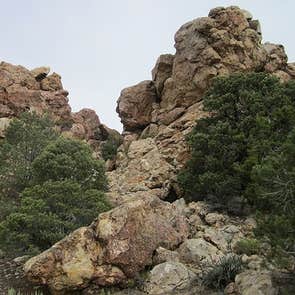
Sacramento Pass Recreation Area
Sacramento Pass Recreation Area - About 15 miles northwest of the park on Highway 50, this BLM-managed free campground offers a great boondocking option with a bit of development. It consists of two loops (upper and lower) with a total of around 10 sites, each with a picnic table, fire ring, and shade ramada. Vault toilets are available, but no drinking water or trash service. Sites are first-come, first-served and free of charge. Despite being just off 'America's Loneliest Road,' Sacramento Pass is scenic - set among sagebrush hills with views toward Wheeler Peak. Campers praise the cleanliness and solitude; it rarely fills up except possibly on holiday weekends. The upper loop sites are tucked among junipers and tend to be more sought-after for shade and views. A short hiking trail leads to a viewpoint overlooking the basin. Night skies here are excellent (almost as dark as in the park). This rec area is accessible to most RVs and trailers, though big rigs should use caution on the gravel entrance road. If you don't mind the 20-minute drive to the park, Sacramento Pass is an outstanding dispersed-style camping area with a few amenities, making it popular among budget campers and vanlifers.
Campground Comparison Table
| Campground | Location & Sites | Cost & Reservations |
|---|---|---|
| Lower Lehman Creek | Near Visitor Center 11 sites | $20 Recreation.gov |
| Upper Lehman Creek | Wheeler Peak Road 24 sites | $20 Recreation.gov |
| Baker Creek | Baker Creek Area 38 sites | $20 First-come, first-served |
| Grey Cliffs | Baker Creek Area 16 sites (tent-only) | $20 ($30 group sites) First-come, first-served |
| Wheeler Peak | Wheeler Peak Drive 37 sites | $20 Recreation.gov |
| Snake Creek (Primitive) | South side of park ~12 sites | Free First-come, first-served |
Campground Amenities and Best Uses
Lehman Creek Campgrounds: Lower Lehman offers year-round access and proximity to Lehman Caves and the visitor center, making it ideal for families and those wanting easy access to park facilities. Upper Lehman provides a slightly more remote feel with cooler temperatures and more spacious sites, perfect for those seeking a balance between convenience and solitude.
Baker Creek Area: Baker Creek Campground excels for those wanting first-come, first-served options with easy access to Baker Lake and Johnson Lake trailheads. Grey Cliffs appeals to tent campers seeking solitude and dark skies with minimal amenities.
High Country Access: Wheeler Peak Campground in Great Basin provides unmatched alpine camping at nearly 10,000 feet with immediate access to the park's premier hiking trails, including the Bristlecone Pine Trail and Wheeler Peak Summit. The high elevation and cool temperatures make it ideal for summer escapes.
RV Options: For those traveling with RVs, check out Great Basin RV camping and parks for additional motorhome and RV camping options both inside and near the park.
Primitive Camping: Snake Creek offers free Great Basin dispersed camping for self-sufficient campers willing to forgo amenities for isolation and natural beauty.
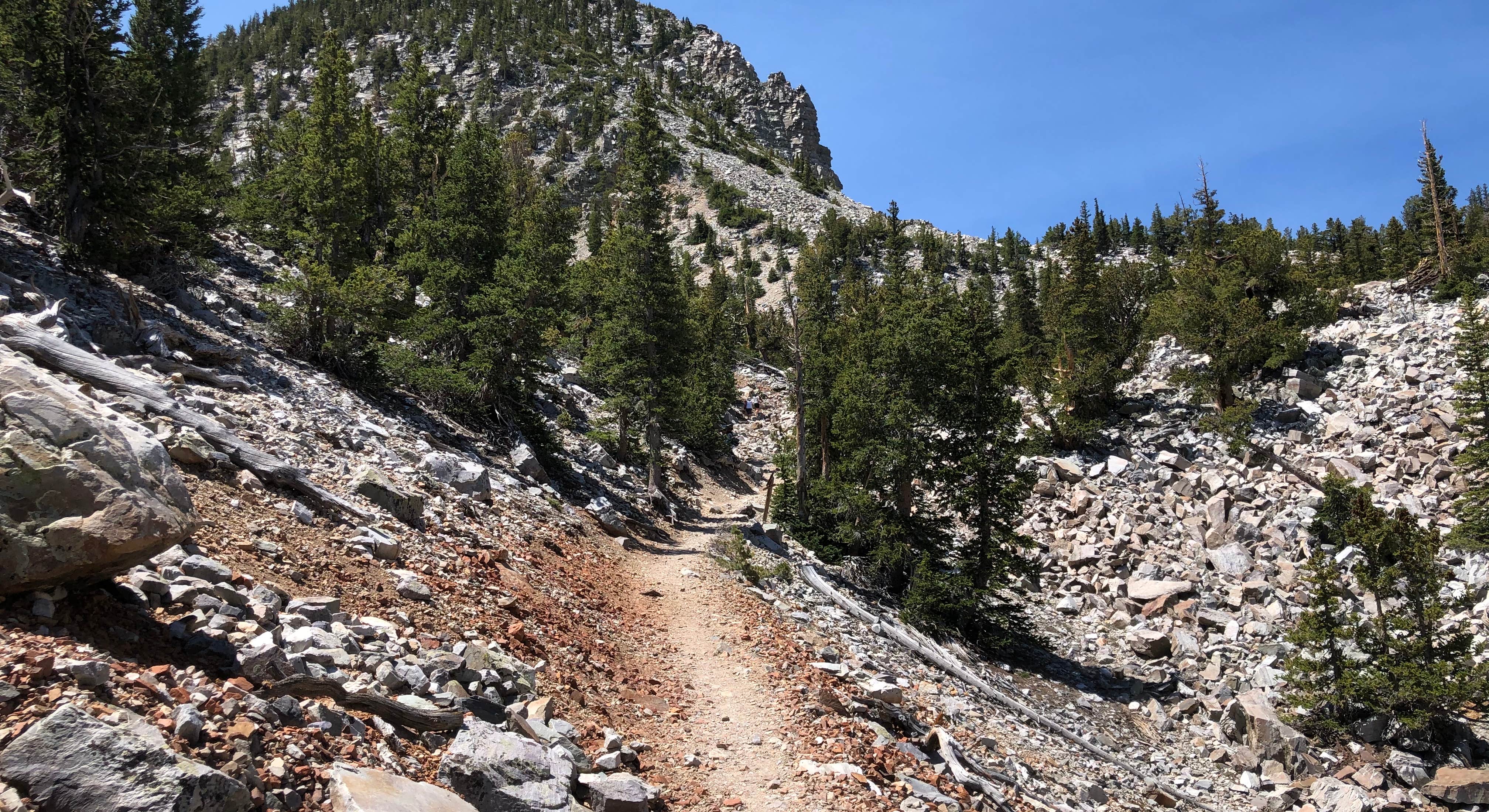 Photo by Thomas B
Photo by Thomas B
Planning Your Great Basin Camping Trip 
When to Visit Great Basin
| Season | Temperatures | Camping Conditions |
|---|---|---|
| Spring (April-May) | Days: 50-65°F Nights: 30-40°F | Lower Lehman open Upper elevations snow-covered Wildflowers bloom at lower elevations |
| Summer (June-August) | Lower: 75-85°F days, 45-55°F nights Wheeler Peak: 60-70°F days, 30-40°F nights | All campgrounds open Reservations essential Afternoon thunderstorms common |
| Fall (September-October) | Days: 60-75°F Nights: 30-45°F | Excellent weather Fall colors peak mid-September Fewer crowds after Labor Day |
| Winter (November-March) | Days: 35-50°F Nights: 10-25°F (often below 0°F) | Only Lower Lehman open First-come, first-served Extreme solitude |
Spring (April-May):
Spring brings variable conditions to Great Basin camping. Lower Lehman Creek Campground can be open and pleasant, with wildflowers blooming in May at lower elevations. Upper elevations will still have snow. It's a peaceful time, just come prepared for cold nights and the possibility that Wheeler Peak area won't be accessible yet. Days warm to the 50s-60s°F with freezing nights. The park receives few visitors during spring, offering solitude for those prepared for variable mountain weather.
Summer (June-August):
Summer offers the best weather - warm days, all campgrounds open, and all trails accessible. However, it's also when the campgrounds are busiest (though never jammed like major parks) and when afternoon thunderstorms are frequent. The alpine campground at Wheeler Peak stays comfortably cool with days around 60-70°F, while lower elevations reach 75-85°F. Most campgrounds require reservations 30 days in advance. July and August bring the driest conditions but also daily afternoon thunderstorms. Pack rain gear and start hikes early to avoid weather exposure.
Fall (September-October):
Fall marks the sweet spot for Great Basin camping: cooler temperatures, beautiful fall foliage (aspens turning gold), and far fewer people after Labor Day. Campgrounds usually have plenty of space by mid-week in fall. October can be fantastic too, but higher campgrounds might close after early snow. The weather is generally stable, you catch the annual Astronomy Festival or Labor Day events, and you avoid the earlier summer monsoon storms. Nights drop to freezing by late September, so bring warm sleeping gear.
Winter (November-March):
Winter camping is for the hardy - only Lower Lehman Campground is open, and you must be self-sufficient in often frigid conditions (nights well below freezing). The reward in winter is utter solitude; you might have the whole campground to yourself, and you can enjoy snowshoeing or cross-country skiing with virtually no one around. The park's dark winter skies offer exceptional stargazing. Prepare for extreme cold and limited services.
Great Basin Reservation Systems Explained
Securing a campsite in Great Basin National Park requires understanding the reservation system:
Recreation.gov Reservations apply to Lower Lehman Creek, Upper Lehman Creek, and Wheeler Peak campgrounds during peak season (roughly May through September). Reservations become available on a rolling 30-day advance window, meaning you can book a site exactly 30 days before your arrival date. After September 15, this changes to a 7-day advance window. Sites release at 7:00 AM Pacific Time on the booking day. Create your Recreation.gov account beforehand and log in before the booking window opens.
First-Come, First-Served Options include Baker Creek Campground (year-round), Grey Cliffs Campground (seasonal), and Snake Creek primitive sites (year-round). During off-season (roughly October through April), all developed campgrounds switch to first-come, first-served. Arrive early in the morning (before 10 AM) on summer weekends to secure a site at first-come campgrounds.
Primitive Camping along Snake Creek in Great Basin requires no reservations and remains free year-round. However, road conditions can make access difficult or impossible during winter or after heavy rain. Always check current conditions before attempting Snake Creek access.
Campground Costs and Budgeting
| Campground Type | Nightly Cost | Key Features |
|---|---|---|
| Standard Campgrounds | $20 | Lower Lehman, Upper Lehman, Baker Creek, Wheeler Peak - vault toilets, picnic tables, fire rings |
| Group Sites | $30 | Grey Cliffs group sites - tent-only, vault toilets, no water |
| Primitive Sites | Free | Snake Creek - no facilities, no water, pack out all trash |
Additional Costs and Budget Tips
Park and Entry Fees: Great Basin National Park has no entrance fee, making it one of the most budget-friendly national parks. However, Lehman Caves tours require separate tickets ($8-12 per person) and should be reserved in advance through Recreation.gov.
Facility and Service Fees: No showers exist inside the park. Whispering Elms RV Park in Baker charges $5-7 for showers (non-guests). Firewood can sometimes be purchased in Baker ($8-10 per bundle). Ice costs $3-5 per bag at limited stores in Baker.
Budget-Friendly Alternatives: Free dispersed camping near Great Basin includes Snake Creek primitive sites inside the park and Sacramento Pass BLM campground just outside the park. Both offer no-cost camping for self-sufficient campers. Senior Pass holders receive 50% off standard campground fees.
Essential Gear for Great Basin Camping
Pack prepared for Great Basin's high elevation, variable weather, and remote setting:
Sleeping Gear:
- Warm sleeping bag rated for at least 20°F (even in summer)
- Insulated sleeping pad with R-value of 4+ for cold ground
- Extra blankets for unexpected cold snaps (especially at Wheeler Peak)
- Tent with strong stakes for afternoon winds
Kitchen Setup:
- Large water containers (at least 5 gallons per person)
- Camp stove and extra fuel (wood can be scarce)
- Quality cooler with block ice (lasts longer than cubed)
- Bear-resistant containers not required but useful for rodent protection
- Dish washing supplies and biodegradable soap
Clothing:
- Layering system for temperatures ranging from 30s to 85°F
- Warm fleece or down jacket (nights are always cold)
- Rain jacket and pants (afternoon storms in summer)
- Warm hat and gloves (essential even in July at high elevations)
- Hiking boots with ankle support for rocky trails
Other Essentials:
- Headlamp with red-light mode for stargazing
- Sunscreen and sunglasses (high elevation intensifies UV)
- Backup power source (solar charger or extra batteries)
- First aid kit with altitude sickness medication
- Weather radio (cell service is extremely limited)
- Offline maps downloaded to phone
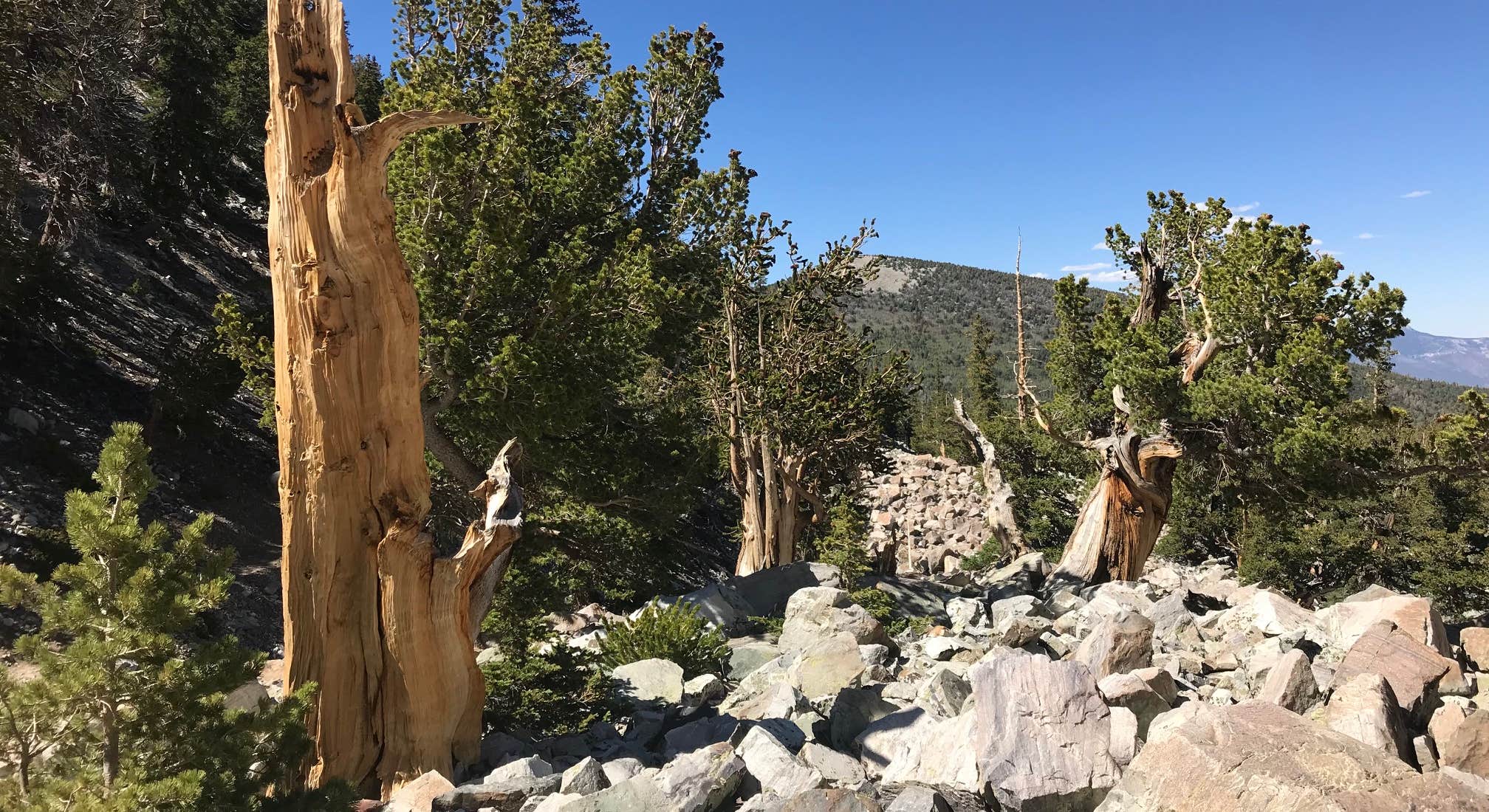 Photo by Susan V
Photo by Susan V
Wildlife Safety and Park Regulations 
Wildlife Considerations in Great Basin
Great Basin National Park is home to a variety of animals, but notably no bears reside here, which simplifies food storage. However, campers should still be mindful of wildlife for safety and their protection:
Snakes and Scorpions:
In warmer months, watch where you step or place your hands, especially in rocky or brushy areas at lower elevations. Rattlesnakes are rare but do exist in the region. Always check your shoes and tents before climbing in. Use a flashlight at night.
Mountain Lions:
These big cats roam the Great Basin ranges but are very seldom seen. Still, it's wise not to hike alone at dawn/dusk and keep small children close on trails. If you encounter a mountain lion, do not run; make noise and appear large. Chances of an encounter are extremely low.
Insects:
Mosquitoes aren't a huge problem here due to the dry climate, but in spring there can be gnats or midges near water. Bring insect repellent just in case. Watch out for ants when you set up camp - avoid placing your tent on an ant hill (they can be active even at high elevation in summer).
Handling Food and Trash:
Keep a clean camp to avoid attracting critters. Ravens and chipmunks are extremely crafty at stealing food. Secure everything in your vehicle when you're away from the site. Never leave out greywater or dirty dishes, as the scent attracts animals at night.
Pets and Wildlife:
If you have dogs with you, keep them leashed and under control. Check out pet-friendly camping near Great Basin for options that accommodate your four-legged companions. Not only is it park rule, but it protects your pet - porcupines, snakes, or even coyotes could harm an off-leash dog that wanders. Pets are not allowed on park trails (except a couple of short paved paths), so plan to only have them in campground areas and along roads.
Park Regulations and Etiquette
| Regulation Category | Rules to Follow | Notes |
|---|---|---|
| Campfires | Allowed only in provided fire rings/grills at campgrounds No fires at dispersed sites along Snake Creek Never leave fires unattended; fully extinguish | Fire bans common in summer - check postings at campground kiosks |
| Quiet Hours | 10:00 PM to 6:00 AM in all campgrounds Generators permitted only 8:00 AM - 8:00 PM | Sound travels far in quiet desert nights; respect your neighbors |
| Food & Waste | Store all food/trash in vehicle or hard containers (no bear lockers provided) Pack out trash if cans are full or not present Do not dump greywater on ground in camp - use toilets or scatter 200ft away | This prevents wildlife problems and keeps camps clean for everyone |
| Pets | Pets must be leashed (6 ft max) at all times Pets not allowed on trails or in Lehman Caves Never leave pets unattended at campsites | There is a kennel in Ely if you plan cave tours (reserve ahead) |
| Camping Limits | Max 8 people and 2 vehicles per site (1 RV + tent, or 2 tents) 14-night limit per campground (per year) No camping outside designated sites in park (except with backcountry permit) | Backcountry campers must register for free permit at visitor center |
Additional Park Regulations
Cave Tours: Lehman Caves can only be entered on guided tours. If you plan to do this popular activity, you'll need to purchase tour tickets (through Recreation.gov or at the visitor center) and arrive at the appointed time. Tours often sell out in summer, so book early if camping during peak season. No backpacks, large bags, or pets are allowed in the caves - secure those at your campsite or vehicle.
Cultural Respect: Great Basin National Park contains sites and artifacts important to Native American history (e.g., rock art, shelters) and to more recent settlers (like old mining remnants). It is illegal to disturb or remove any artifacts or rocks, and carving on trees or rocks is prohibited. Enjoy these sites respectfully and leave them as you found them for others to discover.
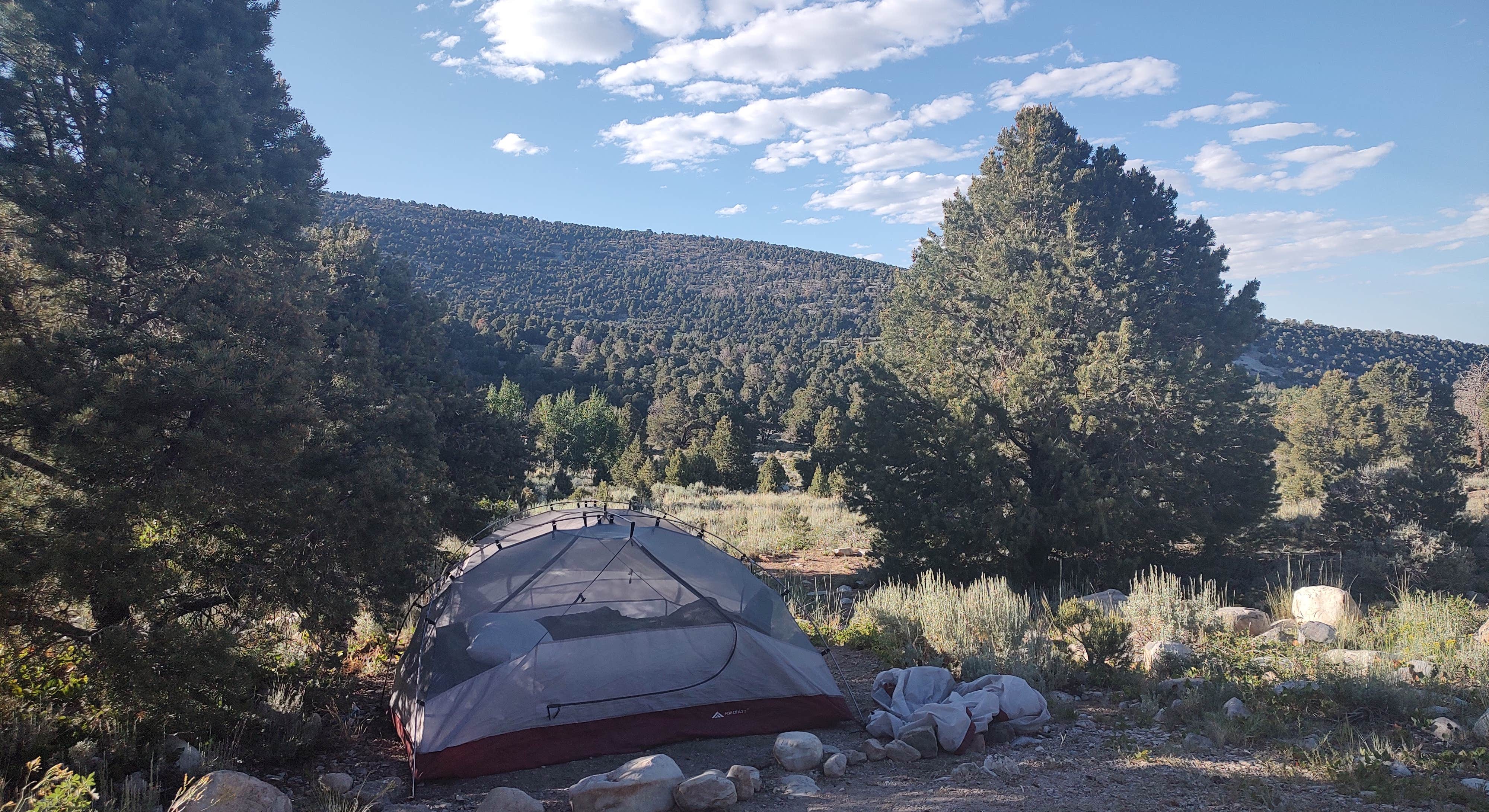 Photo by Greebly M
Photo by Greebly M
Beyond the Campground: Activities and Exploration 
Day Trips from Great Basin Campgrounds
From Lower Elevations (Lower/Upper Lehman, Baker Creek Campgrounds):
Lehman Caves Tour: A must-do for many visitors, Lehman Caves is a stunning marble cave system filled with stalactites, stalagmites, and rare shield formations. It's located near the Lehman Caves Visitor Center (5-10 minute drive from Lower Lehman or Baker Creek campgrounds). Tours (60 or 90 minutes) run daily - reserve in advance, as they often book up. Bring a jacket (cave temp ~50°F) and be prepared for tight passages. Campers love the caves as a midday activity, especially on a hot summer day or if afternoon storms roll in.
Scenic Wheeler Peak Drive: From Lehman Creek Campgrounds, it's about a 12-mile paved drive up to over 10,000 feet at road's end. Along the way, stop at Mather Overlook for jaw-dropping views of the basin below. The road ends near Wheeler Peak Campground, where several trailheads begin. Even if you're not staying up there, a day trip drive to the top is well worth it for the cooler air and scenery - just note vehicles over 24 feet aren't allowed beyond a certain point.
Bristlecone Pine Trail: Starting from the Wheeler Peak parking area (at the top of the scenic drive), this 2.8-mile round-trip hike (about 600 ft elevation gain) leads to an ancient bristlecone pine grove. These gnarled trees are over 3,000 years old and are among the oldest living organisms on earth. Interpretive signs along the trail tell their story. It's a moderate hike (due to thin air more than the distance) - many campers go in the morning from Upper Lehman or Lower Lehman camp, making a half-day outing of driving up and hiking to see the bristlecones and the rock glacier beyond them.
Astronomy Program at the Visitor Center: During summer new moon periods and the annual Astronomy Festival (usually in September), rangers and volunteers host night sky programs. These often take place at the Lehman Caves Visitor Center area. You can look through powerful telescopes at planets, nebulae, and distant galaxies. Even when formal programs aren't scheduled, just bringing a star chart or using a star app at your campsite can be an activity in itself - the Dark Sky Park designation means you'll see an astonishing number of stars. Remember to use red light flashlights at night to preserve everyone's night vision.
From High Country (Wheeler Peak Campground area):
Alpine Lakes Loop: This is a gorgeous 2.7-mile loop trail that starts near Wheeler Peak Campground, visiting two pretty glacial lakes (Stella Lake and Teresa Lake) tucked beneath Wheeler Peak. It's an easy-to-moderate hike (about 600 ft elevation gain) and great for families or a quick hike if you're acclimating to altitude. If you're staying at Wheeler Peak Campground, you can hit this trail in the early morning - the lakes are often mirror-calm at dawn, reflecting the peaks. Campers from lower campgrounds often drive up to do this hike mid-morning, then picnic by the lake.
Wheeler Peak Summit: Ambitious hikers will want to tackle the Wheeler Peak Summit Trail. It's ~8.6 miles round-trip from the summit trailhead (just down the road from the campground) with 2,900 feet of elevation gain, leading to the highest point in the park (13,065 ft). It's a strenuous all-day hike - plan 6 to 8 hours. Start early (sunrise or before) to avoid afternoon thunderstorms and give yourself plenty of time. Reaching the windy summit yields incredible 360° views - you'll gaze out over an unbroken expanse of basin and range landscape, and on a clear day you might see peaks in Utah. Many campers list this as a trip highlight (and a great accomplishment). Pro tip: spend a night at Wheeler Peak Campground before attempting the summit, so you're already acclimated and right near the trailhead.
Baker Lake or Johnson Lake Trails: For those craving solitude, these lesser-used trails begin up the gravel Baker Creek Road (accessible from Baker Creek Campground). Baker Lake Trail is ~12 miles round-trip, ending at a serene alpine lake in a high cirque. Johnson Lake Trail (10 miles RT) goes to an alpine lake with interesting historic mining ruins nearby. Both are strenuous day hikes (2,500+ ft elevation gain) and great for experienced hikers looking to get off the beaten path - you might not see another soul. If you camp at Baker Creek, you're right by the trailhead. Just register at the trailhead kiosk (and consider an early start). These areas showcase pristine backcountry beauty of Great Basin.
Top Hiking Trails Near Campgrounds
| Trail Name | Difficulty & Distance | Key Features |
|---|---|---|
| Bristlecone & Glacier Trail | Moderate 2.8 miles RT +600 ft | Ancient bristlecone pine grove (~3,000+ yrs old) Optional spur to rock glacier at base of Wheeler Peak Trailhead at 9,800 ft (Wheeler Pk area) |
| Alpine Lakes Loop | Easy/Moderate 2.7 miles RT +600 ft | Visits Stella Lake and Teresa Lake Great mountain views, wildflowers in summer Trailhead near Wheeler Peak Campground |
| Wheeler Peak Summit | Strenuous 8.6 miles RT +2,900 ft | Trail to 13,065-ft summit of Wheeler Peak (2nd tallest in NV) Panoramic 360° views, alpine terrain Thin air - start early to avoid storms |
| Baker Lake Trail | Strenuous 12 miles RT +3,000 ft | Forest and alpine meadow hike to remote Baker Lake Excellent solitude & chances to spot wildlife Trailhead by Baker Creek Campground (high-clearance road) |
Water Activities and Other Recreation
While Great Basin is primarily known for caves and mountain hiking, a few other activities round out your camping trip:
Fishing: Lehman Creek and Baker Creek hold small populations of brook and brown trout. Success is limited due to small stream size and brushy conditions, but some campers enjoy casting in the creeks near camp (Nevada fishing license required). Baker Lake and Johnson Lake in the backcountry also have trout for those willing to trek. Fishing is legal in park streams, but be prepared for a challenge in the tight brush.
Photography & Wildlife Watching: Photographers relish Great Basin's landscapes - from the stark rock formations at Grey Cliffs to the groves of quaking aspens that turn golden in fall. Wildlife is often spotted at dawn and dusk near camp: keep an eye out for mule deer browsing in mountain meadows, jackrabbits darting across open flats, and maybe an elk or two on distant hillsides. In spring, listen for the chorus of frogs near Snake Creek and watch for migratory birds. Always keep a respectful distance and use a zoom lens or binoculars for a closer look.
Scenic Drives Outside the Park: Consider a drive on Nevada's Highway 50 (the "Loneliest Road") or down State Route 487/UT-21 into Utah for vast open scenery. A popular half-day detour is to Lexington Arch, a rare limestone arch in a remote corner of the park (requires a high-clearance vehicle and a 3-mile RT hike). It's a bit of an adventure to reach, but campers who make the trip rave about the wild, unvisited feel of that area.
Evening Ranger Programs: In summer, the park often hosts evening talks at the campground amphitheaters (usually at Upper Lehman or Wheeler). Topics range from astronomy to local wildlife to Great Basin's cultural history. These free talks are a great way to enrich your trip - check the schedule posted on bulletin boards or ask a ranger at the visitor center.
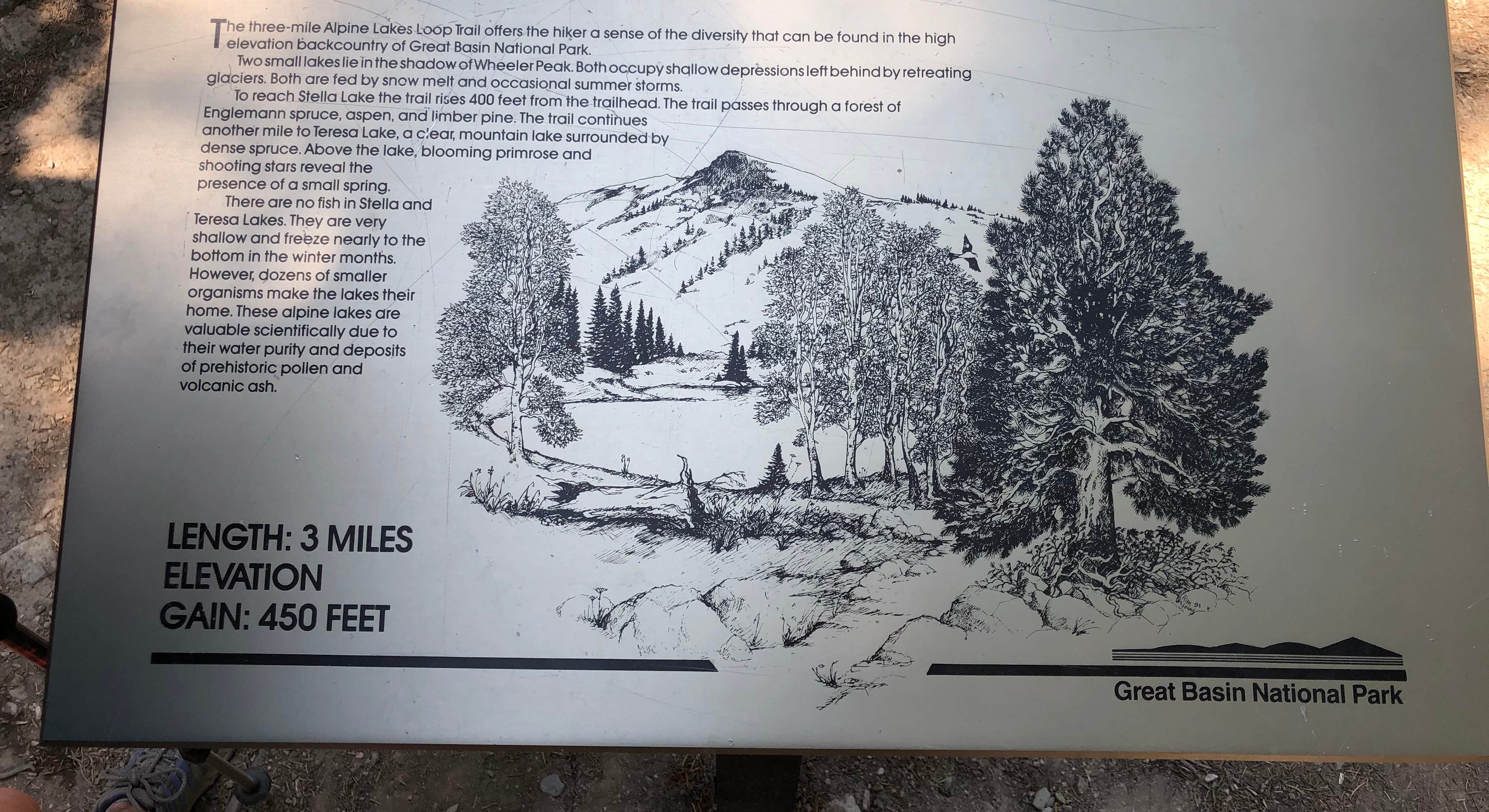 Photo by Thomas B
Photo by Thomas B
The Dyrt Community Insights 
Community Highlights and Recommendations
Unparalleled Stargazing: The Dyrt community can't say enough about the night skies in Great Basin. Campers report seeing the Milky Way and planets with startling clarity from every campground - many call it the best stargazing they've ever experienced. Lower Lehman Creek campers noted, "We saw more stars than I've ever seen before," and even at the lower elevations the lack of light makes for dazzling nights. Tip: Attend the park's Astronomy Program if available, or simply look up from your campsite on a clear moonless night - you won't be disappointed.
Prepare for Cooler Temps: A common piece of advice is to pack for cold weather, even in summer. Reviews frequently mention the "significant nighttime cold" at Upper Lehman and Wheeler Peak campgrounds. It might be 80°F during the day, but after sunset temperatures plummet (often into the 40s or lower at high camps). Savvy campers bring 20°F-rated sleeping bags, extra blankets, and layers. Wind can also be strong at Wheeler Peak. As one camper put it, "be prepared for any weather - we had hot sun, chilly wind, and a surprise thunderstorm all in one weekend."
Solitude and Space: Great Basin's lesser-known status means breathing room for campers. The community consistently praises the quiet and uncrowded nature of the campgrounds. Even in peak season, you won't experience the jam-packed sites found in more popular parks. Wildlife sightings are common - many reviewers were delighted by mule deer grazing near camp at dawn and wild turkeys wandering through picnic areas. The flip side of the solitude is the remoteness: as one camper noted, "you are literally in the middle of nowhere, so come with everything you need." The lack of nearby stores and spotty cell service are a trade-off for the peaceful ambiance.
Favorite Campgrounds: Lower Lehman Creek gets love for its year-round availability and creekside charm - campers enjoy the lush vegetation (rare in Nevada's desert) and the proximity to Lehman Caves. Upper Lehman and Baker Creek Campgrounds receive high praise for their scenic settings and shade. Baker Creek's upper loop has views of Wheeler Peak and the soothing sound of the creek; one Dyrt Ranger said "absolutely gorgeous views of the Wheeler Peak range from the upper sites." Wheeler Peak Campground is a standout for those seeking a true alpine environment - multiple reviewers call it their favorite for the tranquility and stunning sunrise/sunset views, though they caution about the thin air and cold nights. Grey Cliffs appeals to tent campers who want a more primitive feel (and often have the place almost to themselves). In short, you really can't go wrong - each campground offers something unique, so many visitors tour and sample more than one during their stay.
Responsible Camping Practices 
Camping in Great Basin's fragile high-desert and alpine environments comes with a responsibility to minimize impact. Here are key responsible camping practices to follow in the park:
Wildlife Protection:
Secure Food from Critters: There are no bears here, but smaller animals (chipmunks, mice, ravens) will raid your campsite. Store all food, trash, and scented items in hard-sided containers or locked in your vehicle. Never leave coolers or food unattended.
No Feeding Wildlife: It's tempting to toss scraps to the deer or birds, but feeding wildlife is prohibited. Keep a clean camp to avoid habituating animals to human food.
Keep Distance: Observe wildlife like mule deer or bighorn sheep from afar. Use binoculars or zoom lenses for a closer look. Approaching or disturbing animals stresses them - remember you're in their home.
Leave No Trace:
Pack It In, Pack It Out: There are limited trash receptacles (only at developed campgrounds). Be prepared to pack out all your garbage if cans are not available or are full. Micro-trash like bottle caps and food wrappers must not be left behind.
Stay on Durable Surfaces: Use existing campsites, trails, and parking pads. The desert soil and alpine tundra are delicate - avoid creating new paths or sites. In dispersed camping areas like Snake Creek, set up tents within 30 feet of provided fire rings or picnic tables as required.
Respect Water Sources: Don't wash dishes or bathe directly in creeks or springs. Carry water 200 feet away and use small amounts of biodegradable soap if needed. This protects water quality for wildlife and downstream campers.
Minimize Campfire Impact: Use the metal fire rings provided. Keep fires small and never leave them unattended. Dead and down wood can be sparse; it's best to bring firewood from outside the park (or purchase locally) to avoid stripping the area of fuel and to prevent pest infestations.
Water Conservation:
Bring Water & Use Wisely: Since most campgrounds have no running water, arrive with ample water containers filled. Use the potable water fill at the visitor center or the spigot (when available) at the dump station. Conserve what you have - Great Basin's aridity means water is precious.
Dishwashing Etiquette: Collect dish rinse water and broadcast it away from campsites and water sources, or use the vault toilet to dispose of strained greywater. This avoids food particles attracting animals to camps.
Campfire Safety:
Follow Fire Restrictions: Check current fire danger levels and adhere to any campfire bans, which are common in summer. When allowed, keep fires within rings and small. The dry Great Basin environment can turn a spark into a wildfire quickly.
Use Local Firewood: To protect the park's trees from invasive insects, do not bring firewood from far away. Purchase firewood in Baker or Ely, Nevada, or gather only dead-and-down wood outside the park on public lands where permitted. Collecting wood inside the national park is not allowed.
Fully Extinguish Fires: Before leaving your site or going to bed, drown your campfire with water, stir the ashes, and ensure it's cool to the touch. Winds can pick up at night and rekindle embers if not completely out.
Frequently Asked Questions 
Do I need a reservation to camp in Great Basin? During the summer peak (generally May through early September), yes - reservations are strongly recommended for all developed campgrounds. The park now uses Recreation.gov for booking, with campsites released 30 days in advance (at 7:00 AM PT). If you arrive without a reservation, you may find first-come availability at Lower Lehman Creek (especially in spring/fall) or at primitive Snake Creek sites, but it's a gamble. In the off-season (late fall through early spring), all campsites revert to first-come, first-served and you can usually find a spot.
When are the campgrounds open? Lower Lehman Creek Campground is open all year (though only the upper loop in winter). Other campgrounds - Upper Lehman, Baker Creek, Grey Cliffs, and Wheeler Peak - typically open in May (Baker/Lower may open as early as April if weather allows, Wheeler Peak often not until June due to snow). They start closing by mid-October as temperatures drop; Wheeler Peak closes first once snow makes the road impassable (often by early October). Always check current conditions, since a heavy late spring snow can delay openings.
Is there cell phone service or Wi-Fi? Expect very limited connectivity. There is no reliable cell service inside the main park areas - most carriers lose signal shortly after you leave Baker, although you might catch a weak signal in the Lehman Caves visitor center parking lot or at higher elevations (don't count on it). The town of Baker has spotty coverage (AT&T and Verizon extended network sometimes work). As for Wi-Fi, the visitor center does not offer public Wi-Fi, but a couple of local businesses in Baker (Whispering Elms bar, the cafe across the street) have it for patrons. Essentially, plan to be unplugged while camping - a satellite phone or personal hotspot won't do much good with no cell either. Let friends/family know you'll be out of reach, and embrace the digital detox!
Can I get water or supplies in the park? Potable water is only available at a few points: the Lehman Caves Visitor Center has an outdoor spigot for filling bottles, and there is a water fill at the RV dump station near the restrooms by Upper Lehman Creek (summer only). No campground (except sometimes Lower Lehman in summer) has its own water source. So, bring plenty with you. As for supplies: the park has no grocery store. The tiny gift shop at the visitor center sells souvenirs, drinks, and maybe limited snacks, but that's it. The nearest convenience store and gas station is the Border Inn (on US-50 at the Utah border, 13 miles from Baker). For a full grocery store, you'd have to go to Ely, NV (an hour+ drive). It's crucial to stock up on food, firewood, ice, and gas before arriving. Many campers top off in Ely or Delta, Utah on the way in. Once in Baker, only very limited basics can be found (sometimes the Whispering Elms office has a few items or the cafe sells ice cream/beer).
Are there showers or hookups? Not inside Great Basin National Park - all campgrounds in the park are dry camping only (no electrical, water, or sewer hookups). There are also no shower facilities in the park. If you absolutely need a shower or hookups, you'll have to stay outside the park. Whispering Elms (just outside) offers paid showers and full RV hookups. Some campers staying long stretches in Great Basin will plan a mid-trip supply run to Ely or nearby Ruth, Nevada and grab a shower there. As for generators, they're allowed in campgrounds during daytime (see quiet hours above), but note that Grey Cliffs prohibits generators entirely and Wheeler Peak's high altitude might strain older units. Most people simply enjoy the simplicity - solar panels can come in handy if you need to charge batteries.
What about bears? Do I need a bear canister? There are no bears in Great Basin NP (the high desert mountain ranges here are not typical bear habitat). Therefore, the park does not provide bear lockers, and bear canisters are not required for backcountry camping. However, you should still practice good food storage (for rodents and other wildlife). Keeping food in your car or a hard-sided camper is fine here (unlike Yosemite where that would attract bears). If you're backpacking, hanging food or using a rodent-proof canister is wise since small critters can chew through packs or tents. But rest assured, the midnight sniffing outside your tent is far more likely a nosey deer or a raccoon than anything dangerous.
Can I camp anywhere else for free? Outside the national park boundaries, yes - much of the land surrounding Great Basin is BLM or National Forest with dispersed camping allowed near Great Basin. Popular free areas include along Snake Creek (inside park, as discussed) and some spots along Strawberry Creek or Weaver Creek (note: Strawberry Creek Campground was destroyed by fire in 2016 and remains closed, but dispersed sites exist in that area). Additionally, Sacramento Pass (BLM, described above) is a developed free campground. If you venture onto dirt roads in Humboldt-Toiyabe National Forest or BLM land around the Snake Range, you can find pull-outs to boondock (ensure it's existing disturbed area, not on vegetation). Just be cautious of road conditions - many dirt tracks require 4x4. As always with dispersed camping near Baker, pack out all trash and follow fire regulations. Within the park, you cannot just camp anywhere except designated sites or if you're backpacking at least 1/4 mile from roads (and you've filled out a backcountry permit). The Dyrt's community often highlights Sacramento Pass and BLM sites as favorite free camp options near Great Basin.
What's the best time of year to camp in Great Basin? It depends on your interests. Summer (June-August) offers the best weather - warm days, all campgrounds open, and all trails accessible - but it's also when the campgrounds are busiest (though never jammed like major parks) and when afternoon thunderstorms are frequent. Fall (September) is a sweet spot: cooler temperatures, beautiful fall foliage (aspens turning gold), and far fewer people after Labor Day. Campgrounds usually have plenty of space by mid-week in fall. October can be fantastic too, but higher campgrounds might close after early snow. Spring (April-May) is variable; Lower Lehman can be open and pleasant, with wildflowers blooming in May at lower elevations, but upper elevations will still have snow. It's a peaceful time, just come prepared for cold nights and the possibility that Wheeler Peak area won't be accessible yet. Winter camping is for the hardy - only Lower Lehman is open, and you must be self-sufficient in often frigid conditions (nights well below freezing). The reward in winter is utter solitude; you might have the whole campground to yourself, and you can enjoy snowshoeing or cross-country skiing with virtually no one around. Many would say late summer into early fall (August through mid-September) is ideal: the weather is generally stable, you catch the annual Astronomy Festival or Labor Day events, and you avoid the earlier summer monsoon storms. Whenever you go, check the park's website for alerts and updates and be ready with layers for the wide temperature swings.
Are campgrounds safe during storms? Generally, yes - but be aware that Great Basin does get strong summer thunderstorms, and occasional high winds. All campgrounds are in forested or sheltered areas (not exposed ridges), so they're reasonably safe. If lightning is severe, avoid open areas and stay in your vehicle or the lower elevation sites (for example, if you're at Wheeler Peak and a big storm is forecast, you might consider shifting to Lower Lehman for better protection among lower trees). Flash flooding is not typically an issue at the developed campgrounds due to their location and construction, but Snake Creek Road campers should be cautious - heavy rain can make the dirt road out treacherous and there are some wash crossings. It's wise to have a weather radio or check forecasts when you have signal. Monsoon storms usually pass quickly; just ensure your tent is staked well (afternoon gusts can accompany storms). After the rain, enjoy the unbelievably clear air and vibrant double rainbows that often appear over the basin!
What do I need to bring? In short: bring everything you might need, because you won't find it on-site. Essentials include a large water jug (or two), plenty of food (plus extra in case you stay longer or get hungrier at altitude), a quality cooler (block ice lasts longer in the desert heat), and foul weather gear (rain jacket, warm clothes). A full camping checklist is provided above, but special mention: bring a headlamp with red-light mode for stargazing, sunscreen and sunglasses (the high elevation sun is intense), and a backup power source if you rely on any electronics (like a solar charger or spare batteries). Also consider a camp stove even if you plan to use campfires - fire bans or wet wood can change your plans, and several campgrounds have no grills on the fire rings (stoves are more reliable for Leave No Trace cooking). Finally, don't forget any medications or personal items - the nearest pharmacy is an hour+ away. If you do forget something minor, the visitor center or the cafe in Baker might help (they've been known to carry basics like bug spray or marshmallows). But it's best to assume no services and pack accordingly.
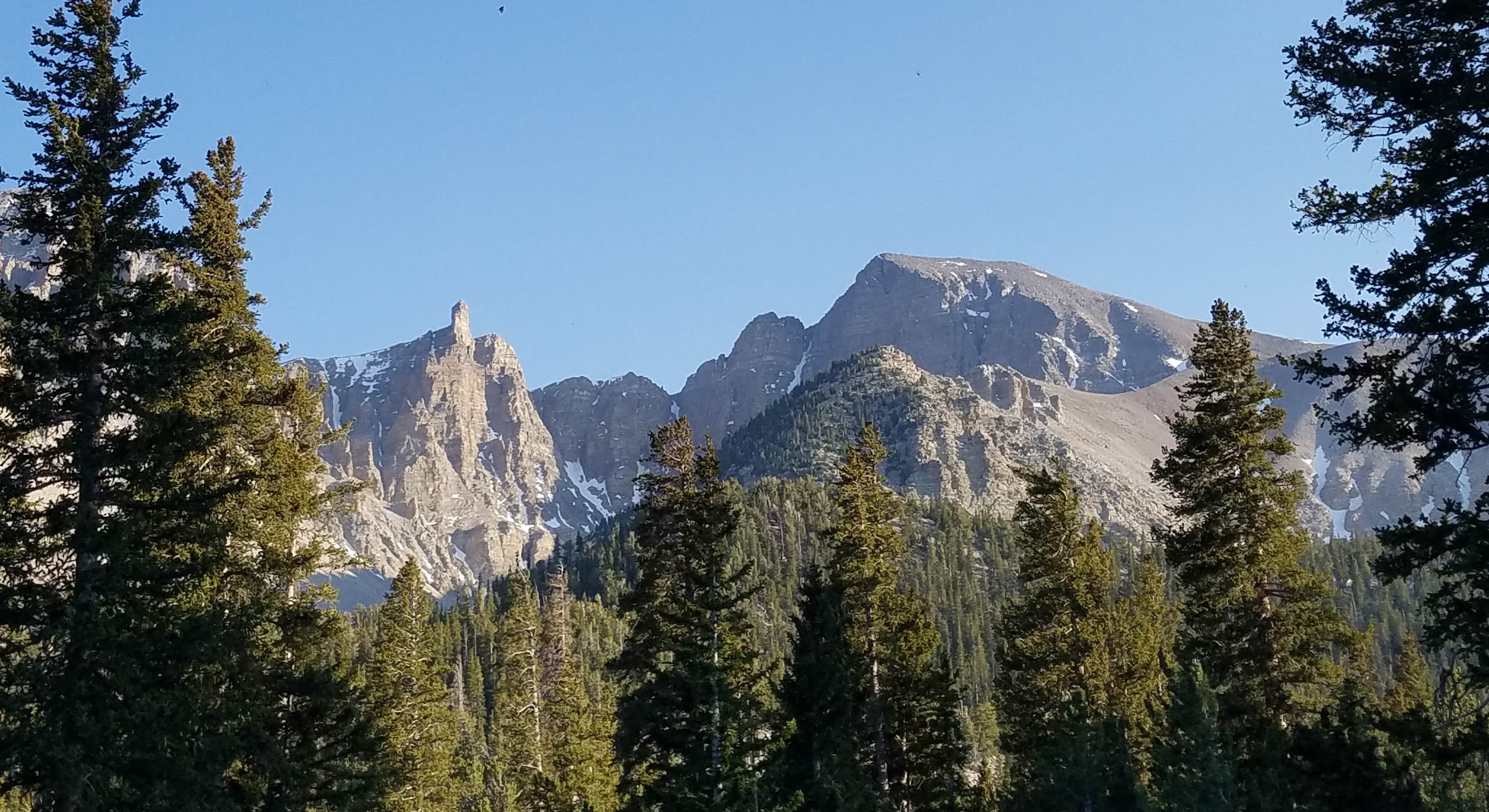 Photo by Pat S
Photo by Pat S
Planning Resources
Essential Great Basin Links
- Great Basin National Park Camping - Reviews and availability for campgrounds in and around Great Basin
- The Dyrt Magazine Great Basin Guide - Expert tips and trip planning resources
- Great Basin National Park Official Website - Current conditions, alerts, and regulations
- Recreation.gov Great Basin Campgrounds - Booking platform for reservable campgrounds
- Great Basin Weather and Road Conditions - Current updates on weather and accessibility
- Nevada Tourism - Regional information and nearby attractions
Reservation Timeline for Great Basin NP
| Time Period | Reservation Task | Platform/Details |
|---|---|---|
| 30 Days Before Trip | Book park campgrounds | Recreation.gov (opens 7:00 AM PT) Lower Lehman, Upper Lehman, Wheeler Peak Set calendar reminder for exact opening date |
| 2-4 Weeks Before | Reserve Lehman Caves tour | Recreation.gov or at visitor center Tours often sell out in summer |
| 1-2 Weeks Before | Check current conditions and plan alternatives | NPS website for weather, road conditions Have backup plans for first-come campgrounds |
| 3-5 Days Before | Stock up on supplies | Shop in Ely or Delta, Utah Fill water containers Purchase firewood |
| Day Before Arrival | Check final weather and road conditions | NPS conditions page Download offline maps Verify campground accessibility |
Great Basin Camping Checklist
Reservations and Permits:
- Campground reservation confirmation (printed and digital)
- Lehman Caves tour tickets (if visiting)
- Photo ID
- Vehicle registration
- Nevada fishing license (if fishing)
- Backcountry permit (if backpacking)
Camping Gear:
- Tent with rainfly and footprint
- Extra stakes for wind
- Sleeping bag rated for 20°F or lower
- Insulated sleeping pad (R-value 4+)
- Extra blankets
- Headlamp with red-light mode
- Lantern
- Camp chairs
- Tarp or shade structure
Kitchen Items:
- Large water containers (5+ gallons per person)
- Camp stove and extra fuel
- Lighter/matches in waterproof container
- Cooler with block ice
- Dish washing supplies
- Biodegradable soap
- Eating and cooking utensils
- Coffee maker or kettle
- Food storage containers
Clothing:
- Layering system (base, mid, outer)
- Warm jacket (fleece or down)
- Rain jacket and pants
- Warm hat and gloves
- Hiking boots
- Camp shoes
- Extra socks and underwear
- Sun hat and sunglasses
Safety and First Aid:
- First aid kit
- Altitude sickness medication
- Prescription medications
- Sunscreen (high SPF)
- Insect repellent
- Hand sanitizer
- Whistle for emergencies
- Weather radio
Navigation and Communication:
- Printed maps and reservations
- Offline maps downloaded to phone
- Compass
- Portable phone charger
- Solar charger or extra batteries
- Emergency contact information
- Camera for stargazing
By planning carefully, respecting wildlife and park regulations, and embracing the remote nature of outdoor adventure, your Great Basin camping trip will create lasting memories. Whether you're gazing at ancient bristlecone pines, exploring marble caves, or watching the Milky Way arc across the darkest skies in America, camping in Great Basin offers experiences that connect you directly to one of the nation's most underrated and peaceful national parks. For those seeking glamping options near Great Basin or cabin rentals in the area, additional comfort-focused accommodations are available to enhance your visit to this remarkable Nevada treasure.

